Abstract
We have treated 20 autistic children with behavior therapy. At intake, most of the children were severely disturbed, having symptoms indicating an extremely poor prognosis. The children were treated in separate groups, and some were treated more than once, allowing for within- and between-subject replications of treatment effects. We have employed reliable measures of generalization across situations and behaviors as well as across time (follow-up). The findings can be summarized as follows: (1) Inappropriate behaviors (self-stimulation and echolalia) decreased during treatment, and appropriate behaviors (appropriate speech, appropriate play, and social non-verbal behaviors) increased. (2) Spontaneous social interactions and the spontaneous use of language occurred about eight months into treatment for some of the children. (3) IQs and social quotients reflected improvement during treatment. (4) There were no exceptions to the improvement, however, some of the children improved more than others. (5) Follow-up measures recorded 1 to 4 yr after treatment showed that large differences between groups of children depended upon the post-treatment environment (those groups whose parents were trained to carry out behavior therapy continued to improve, while children who were institutionalized regressed). (6) A brief reinstatement of behavior therapy could temporarily re-establish some of the original therapeutic gains made by the children who were subsequently institutionalized.
Full text
PDF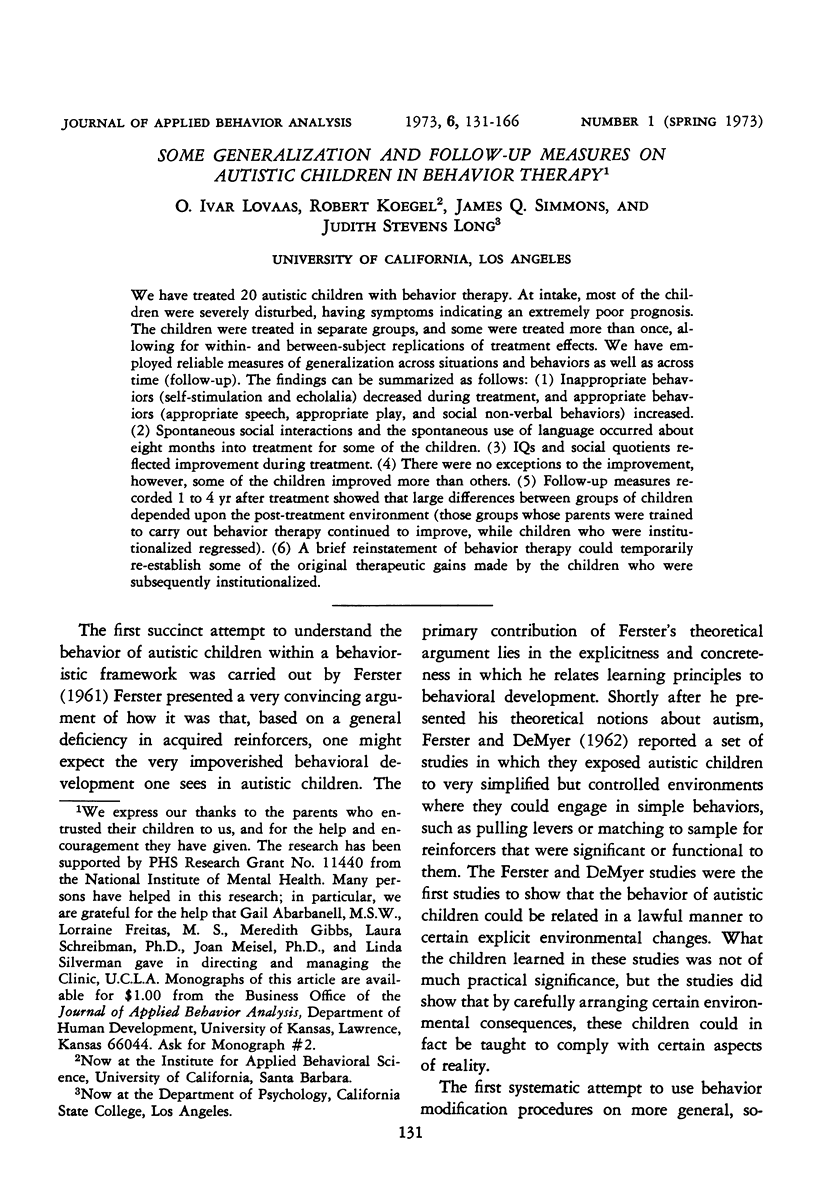


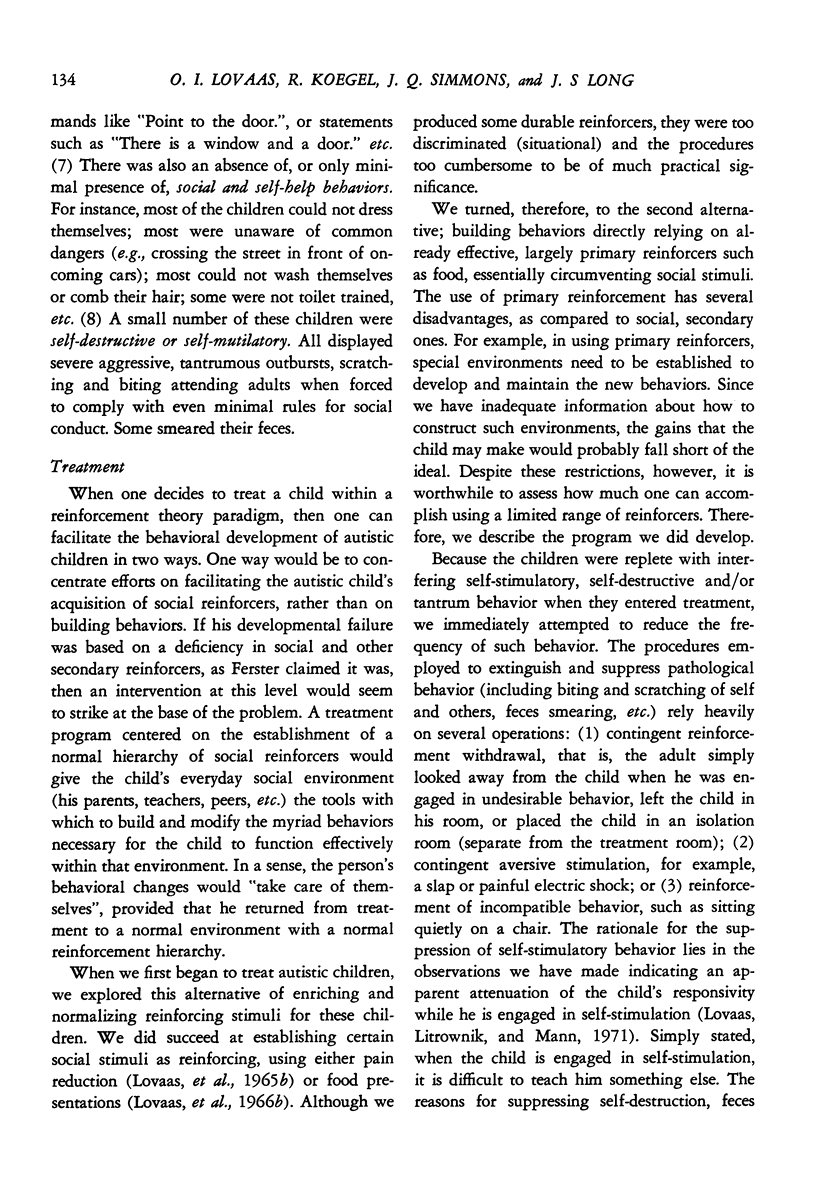
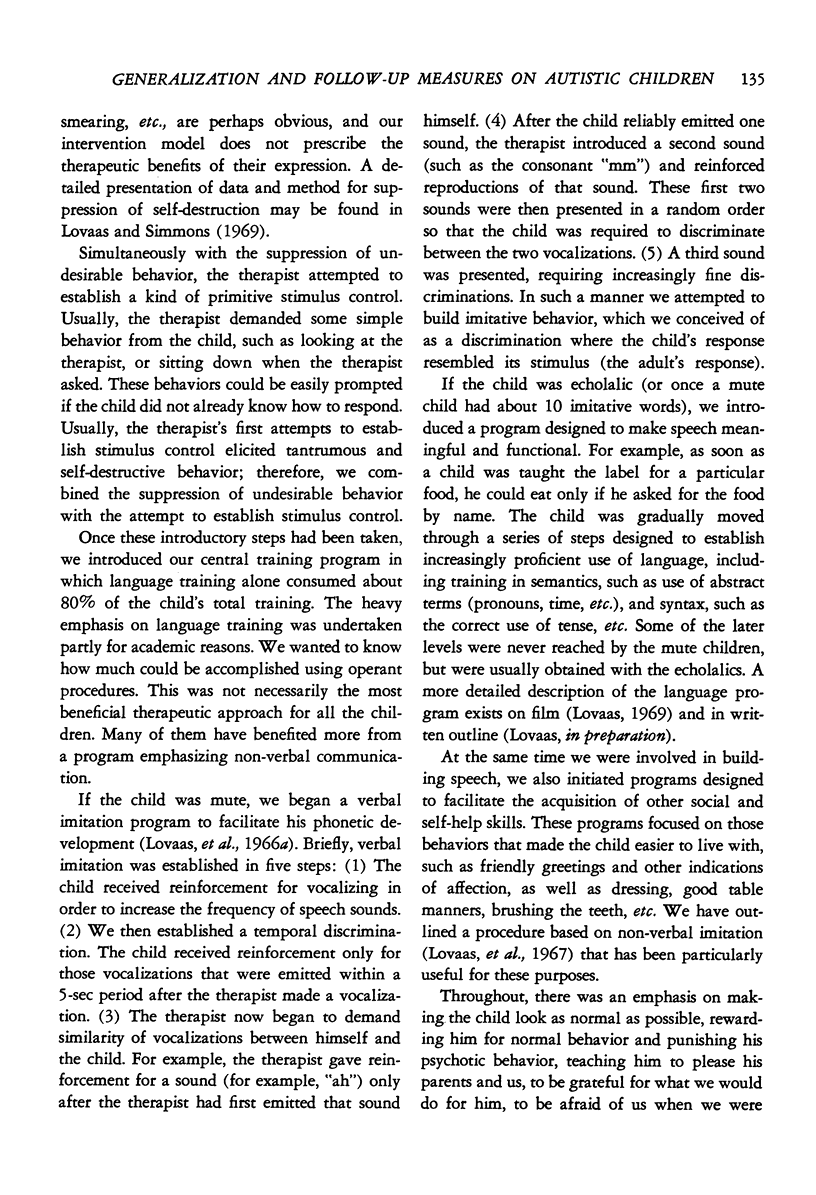
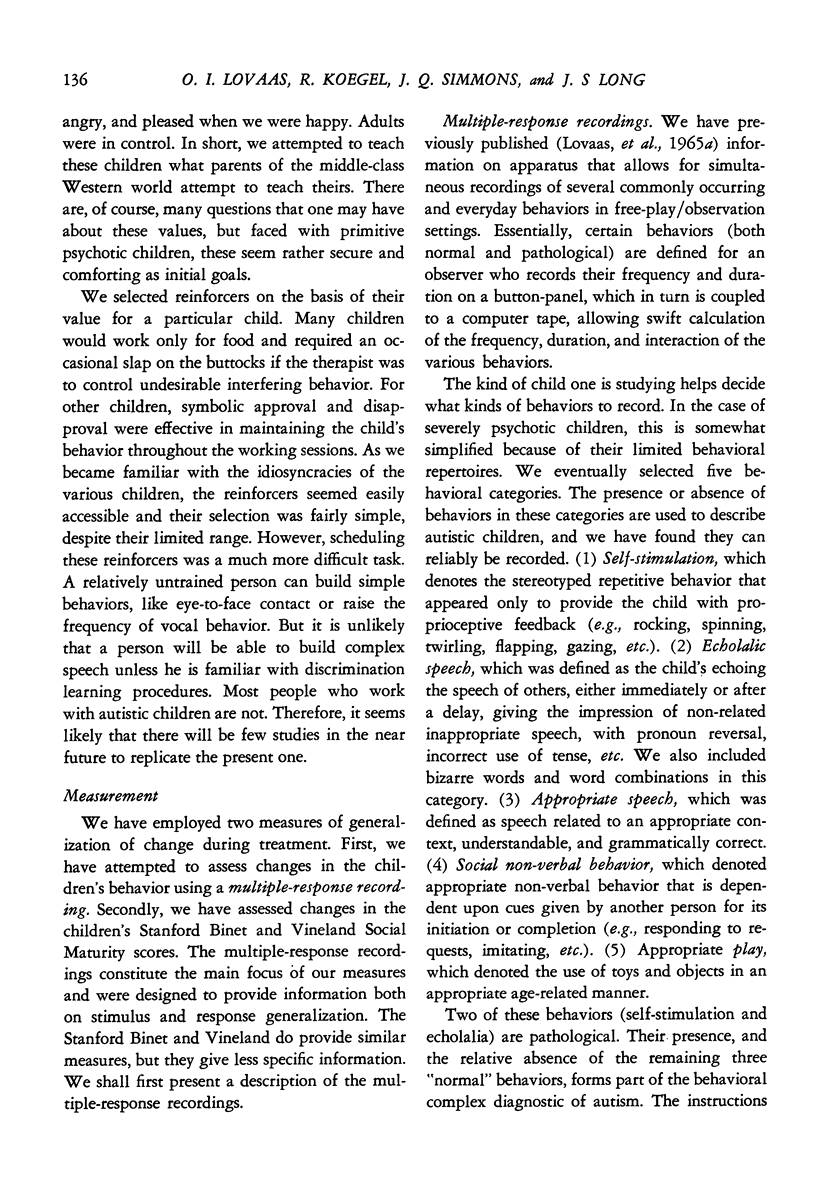
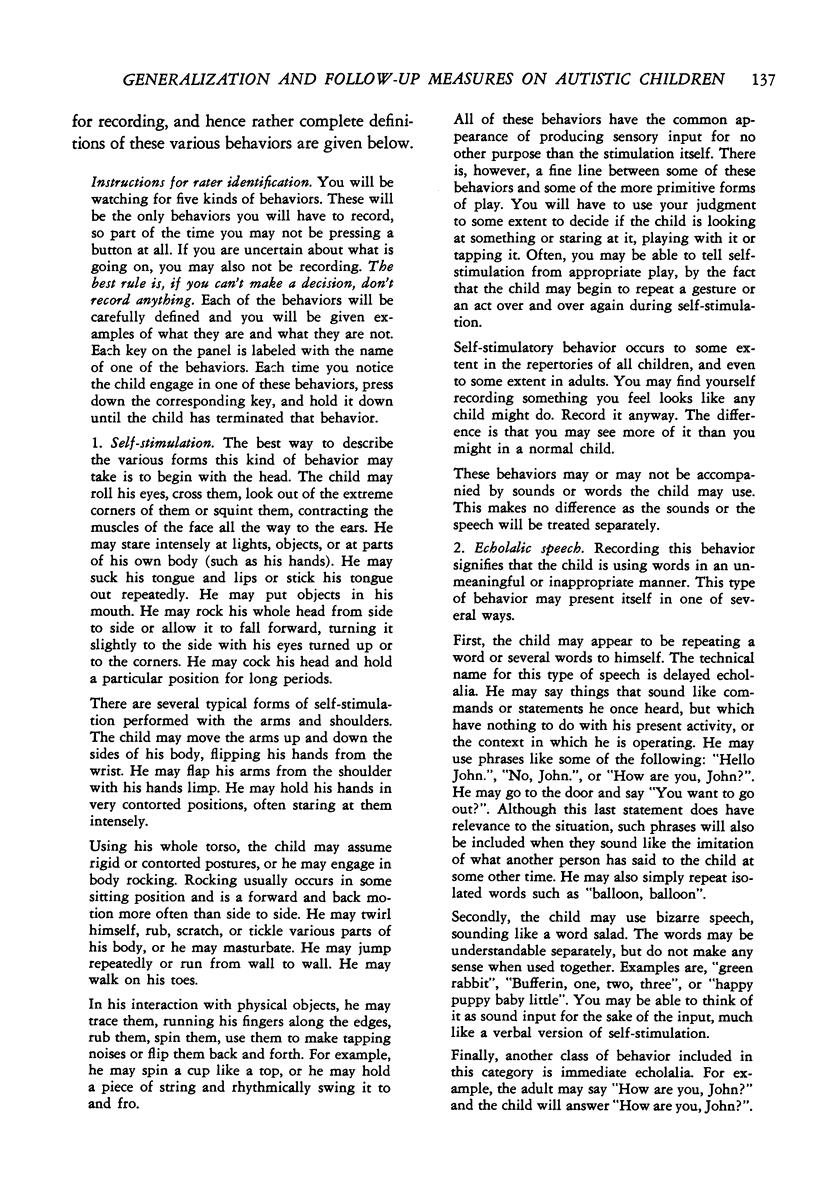


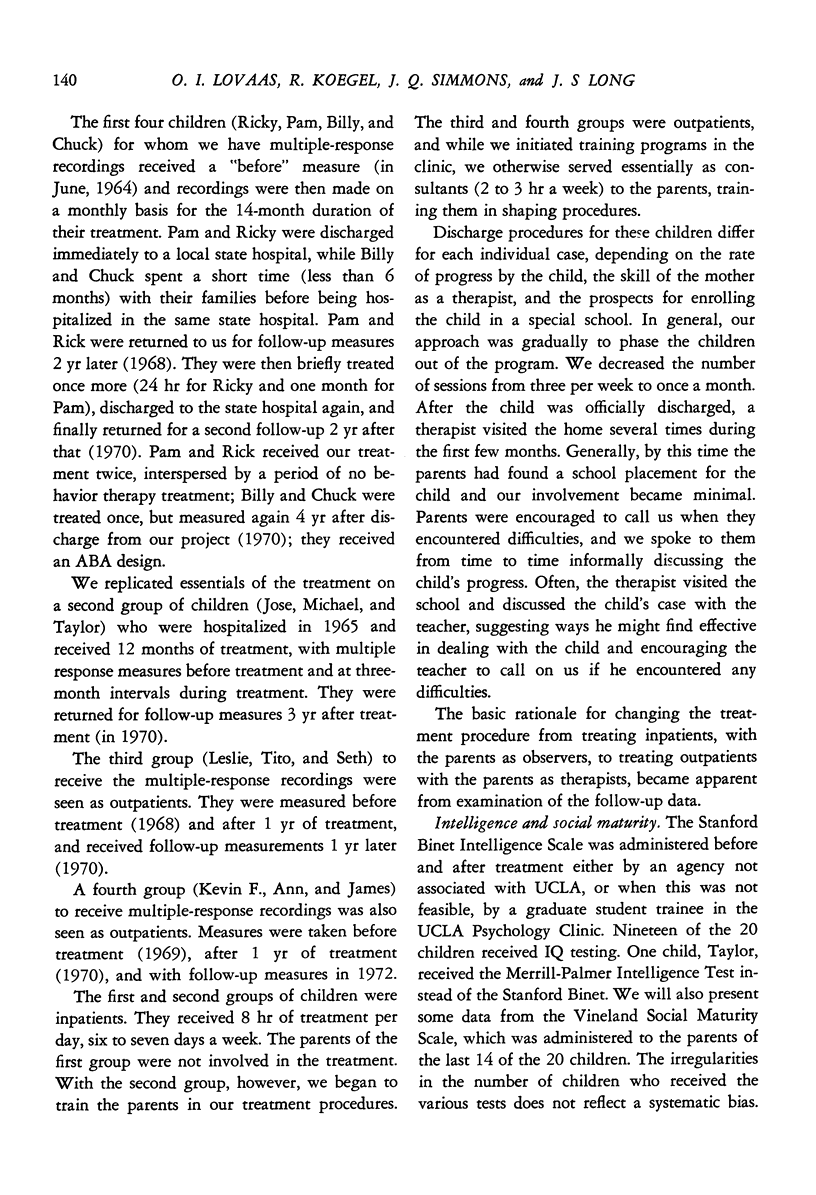
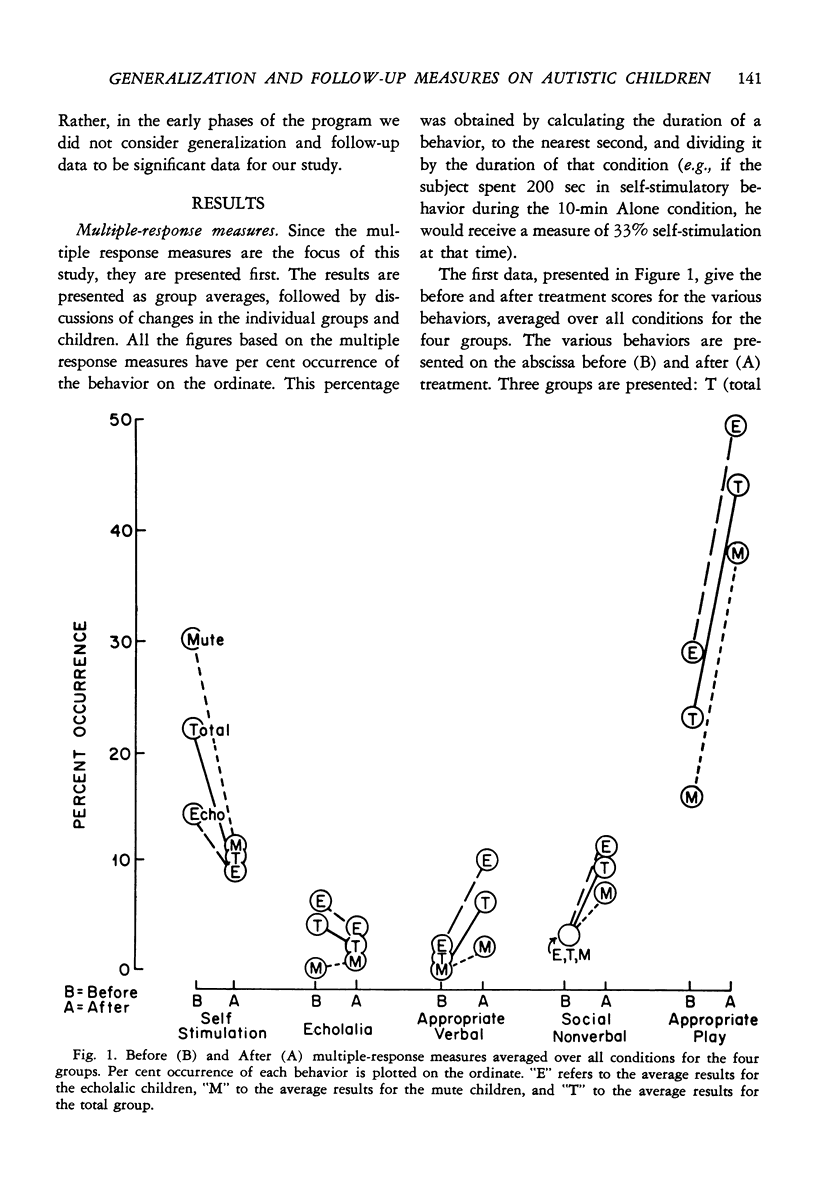
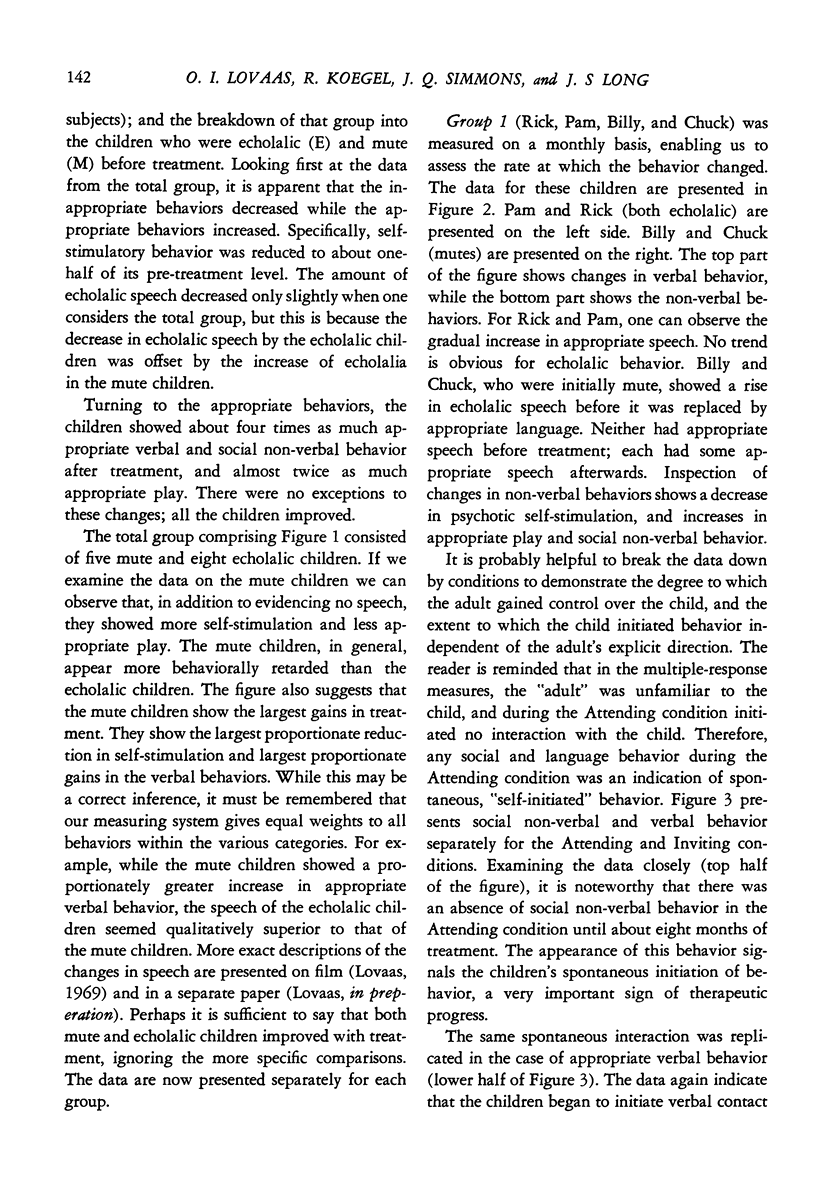
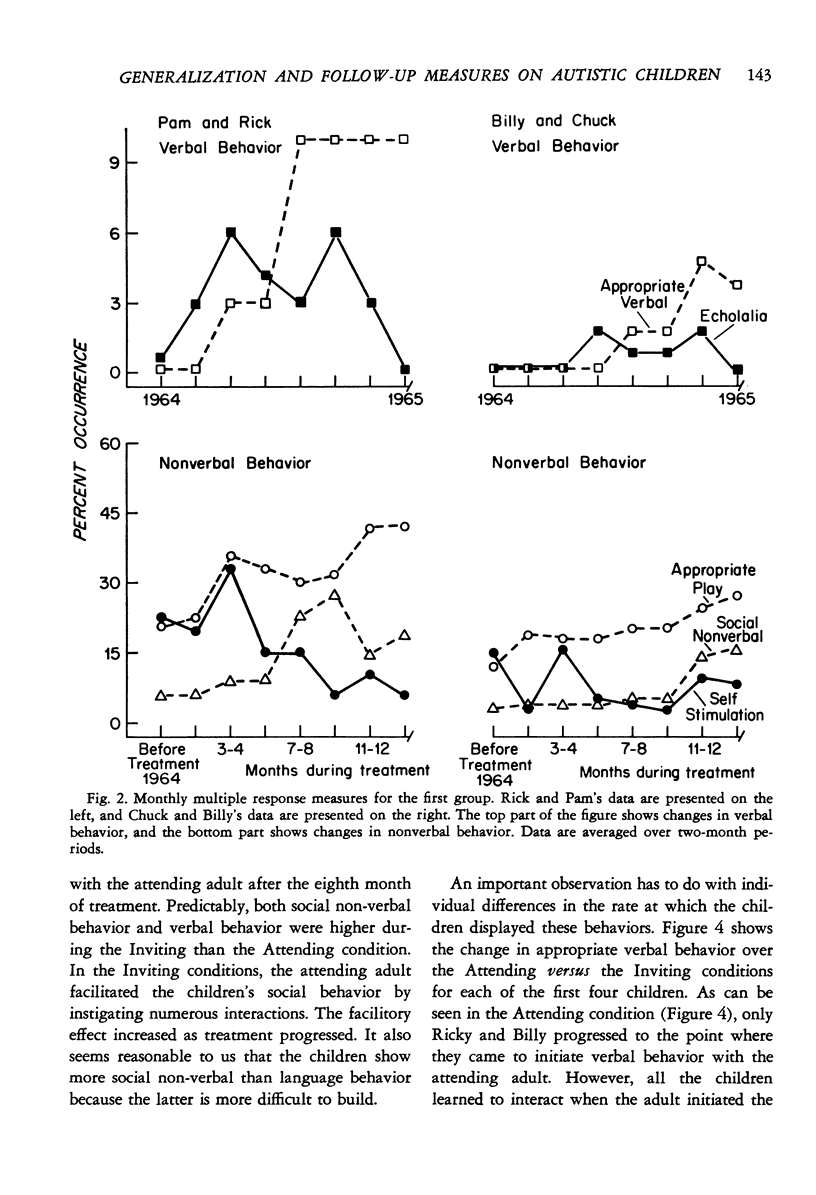

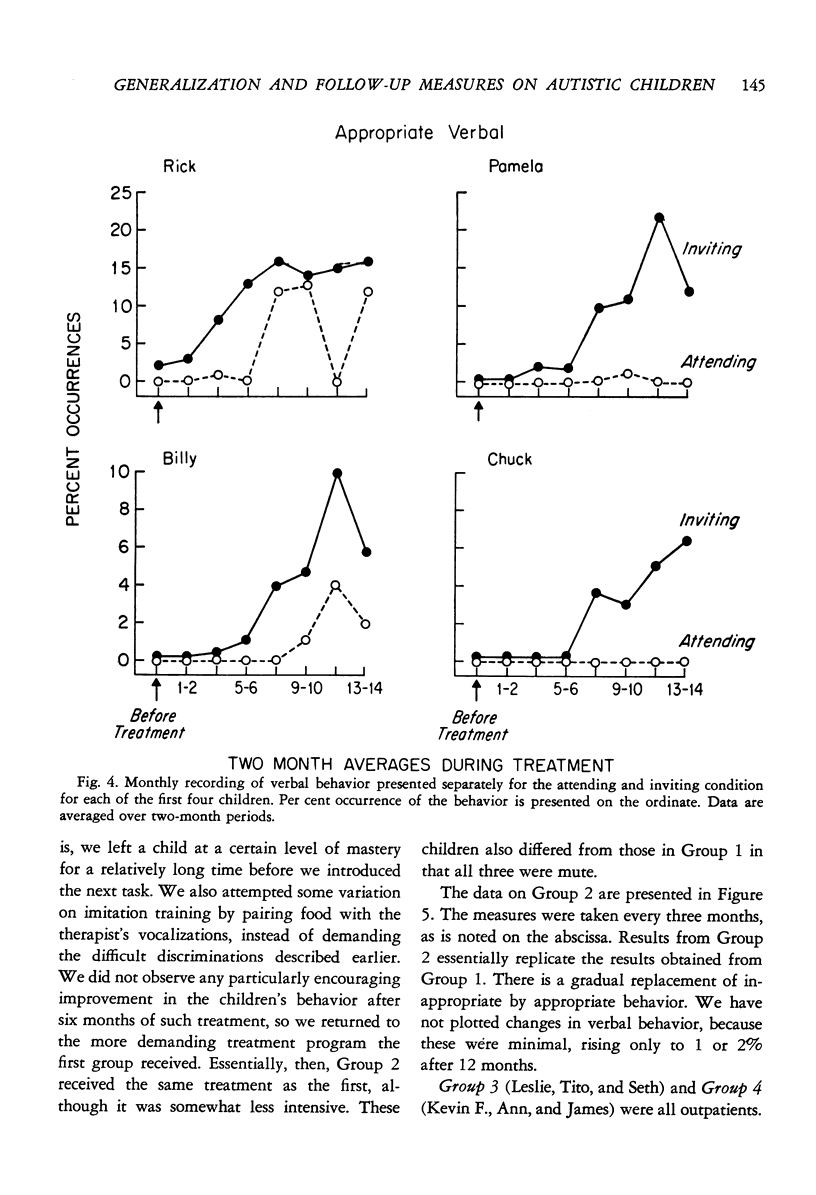
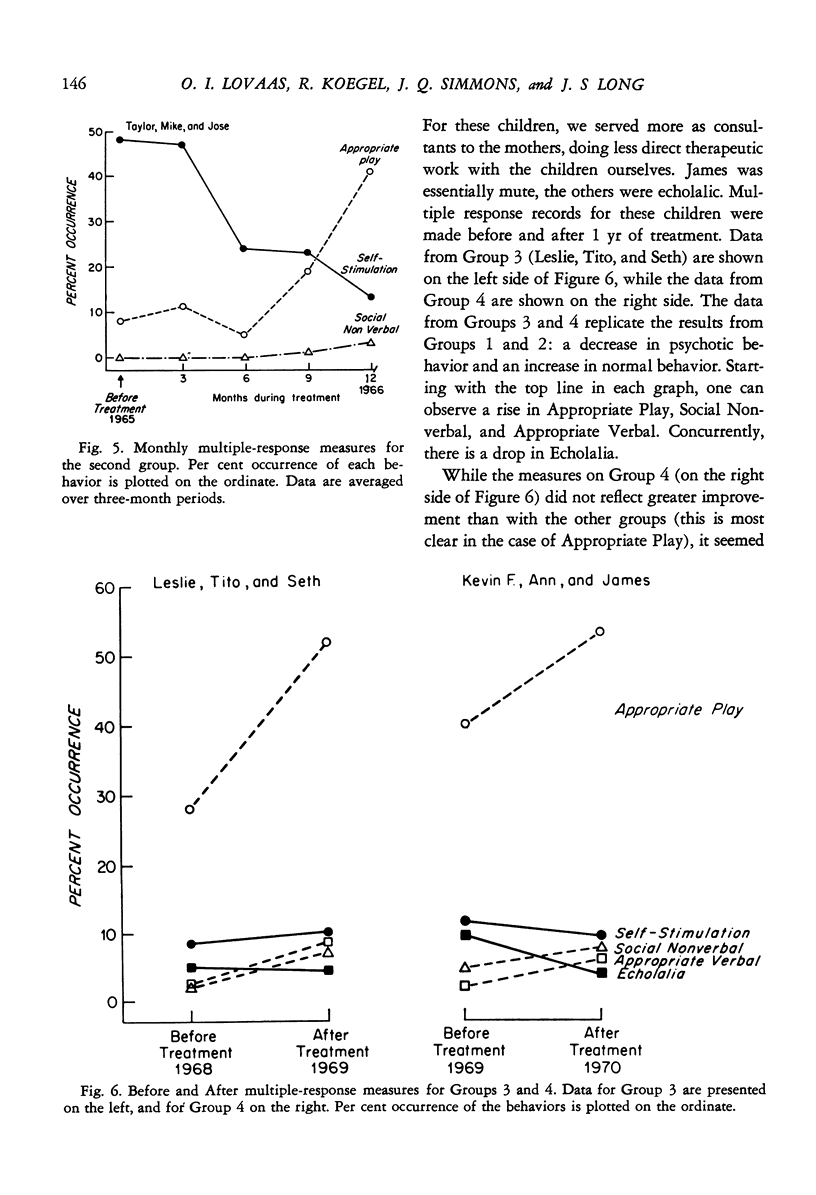
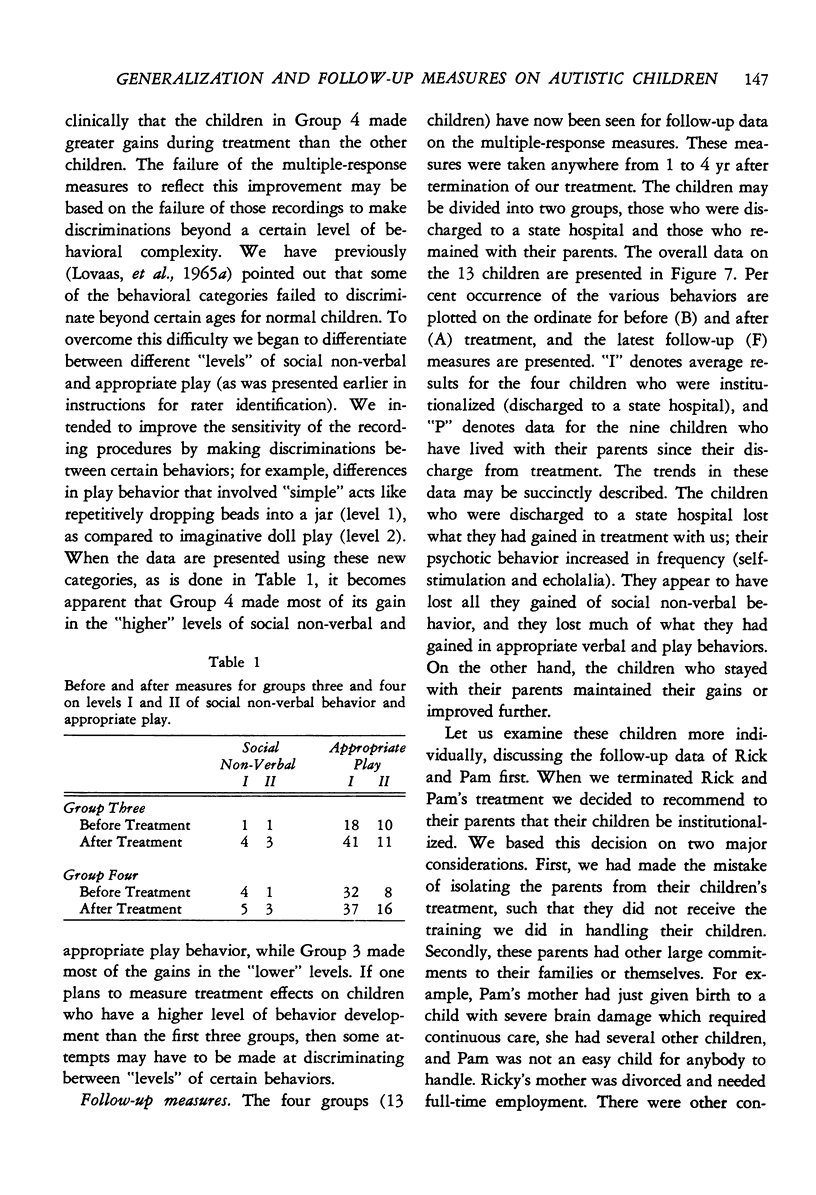
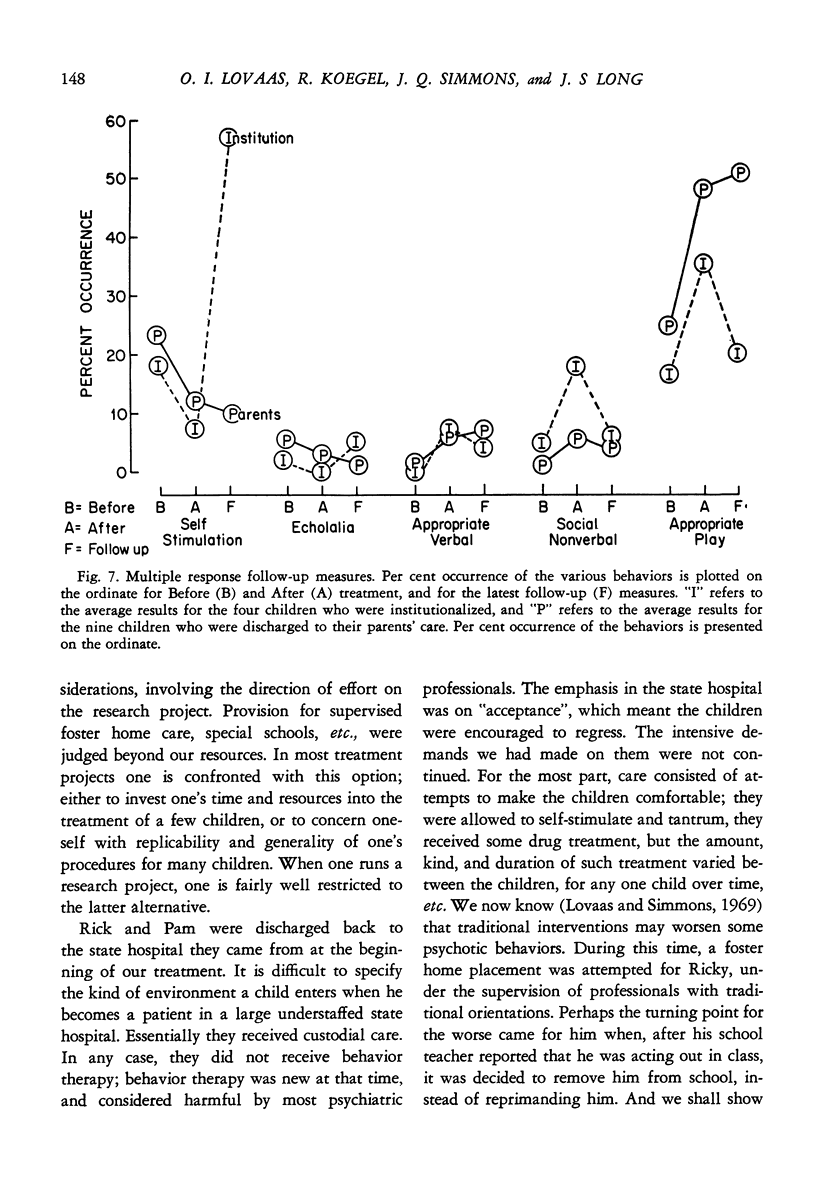
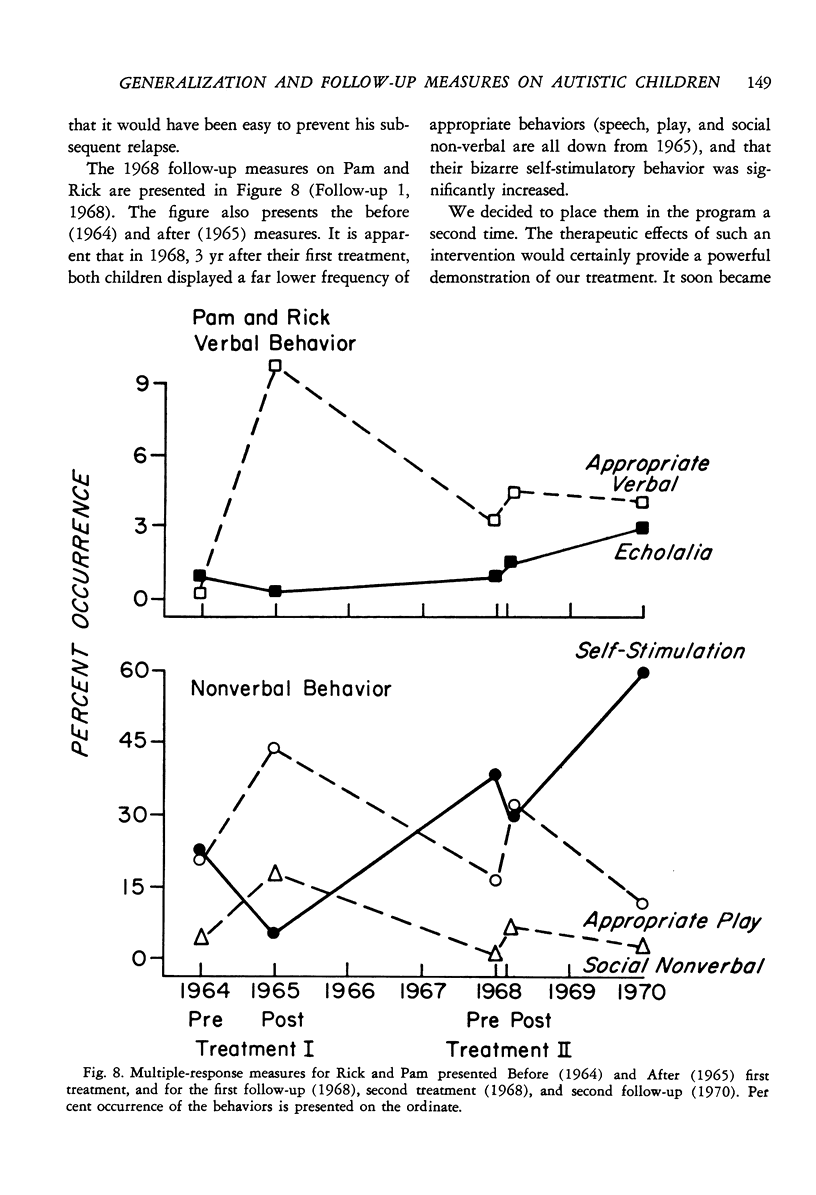
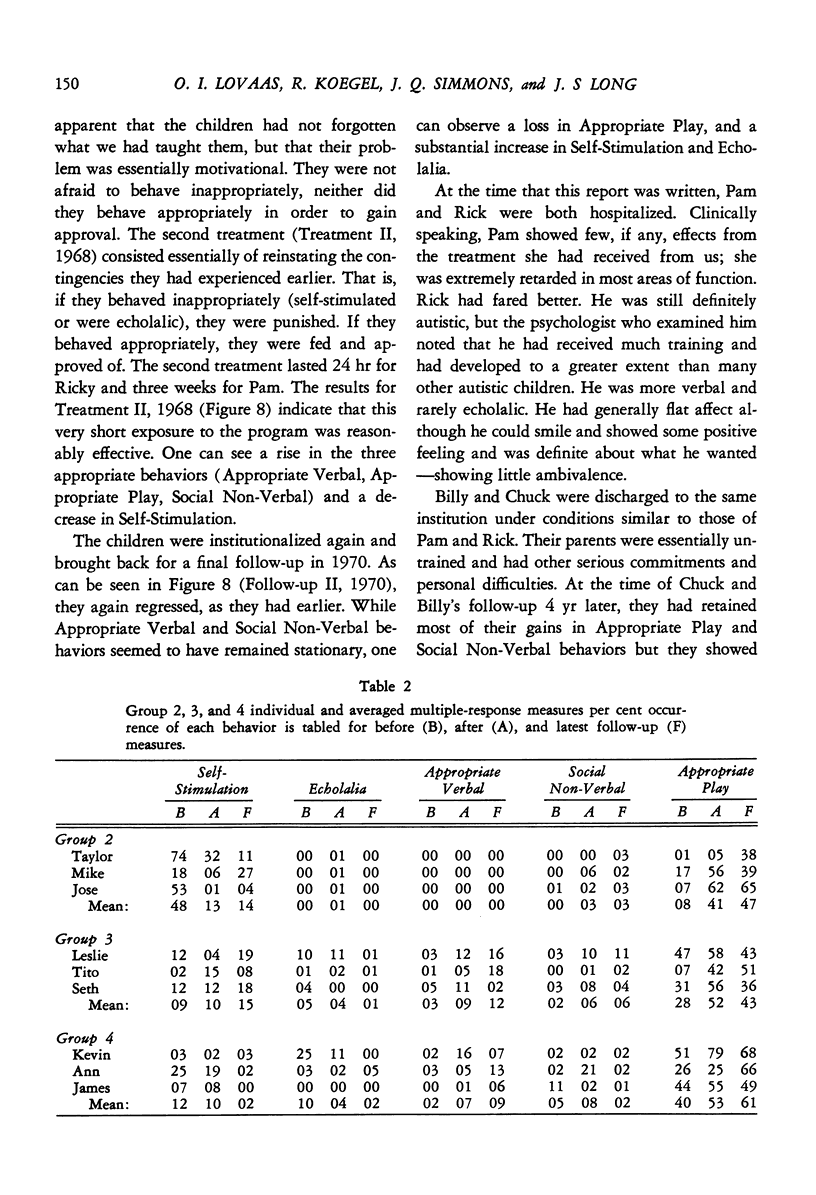


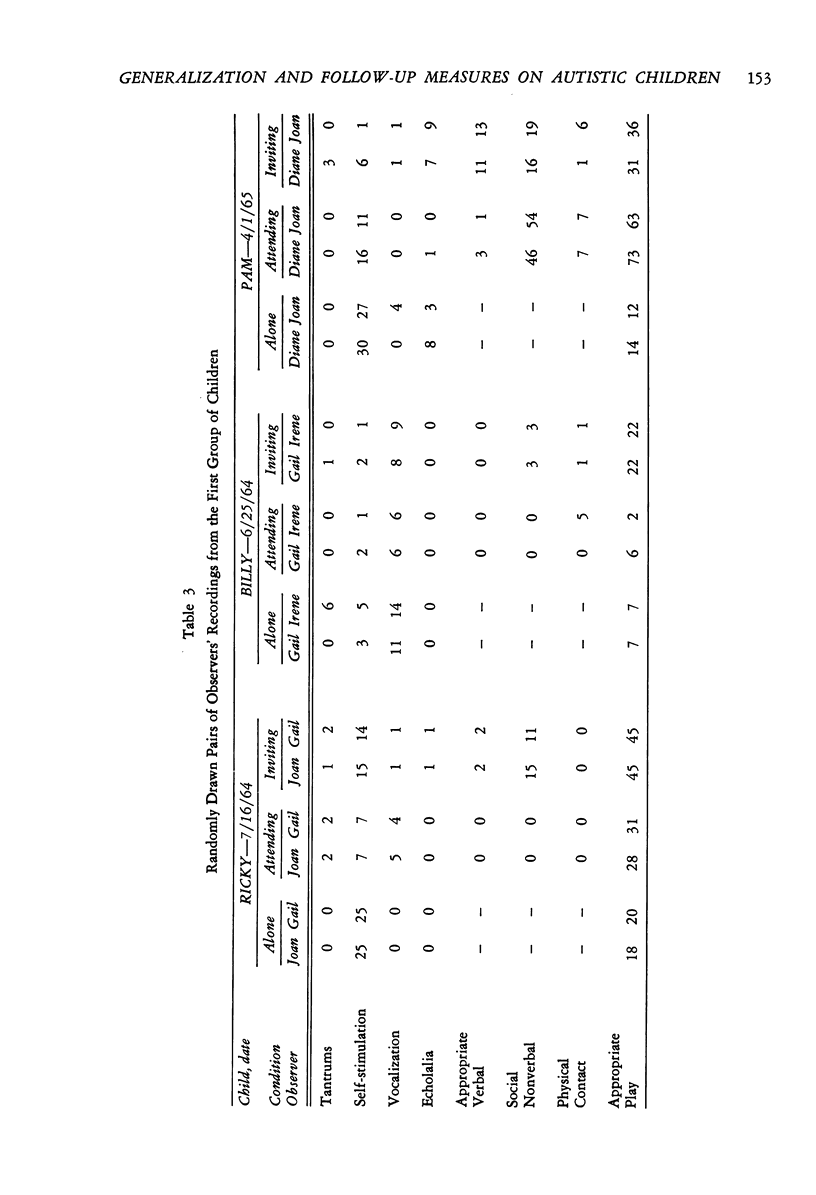
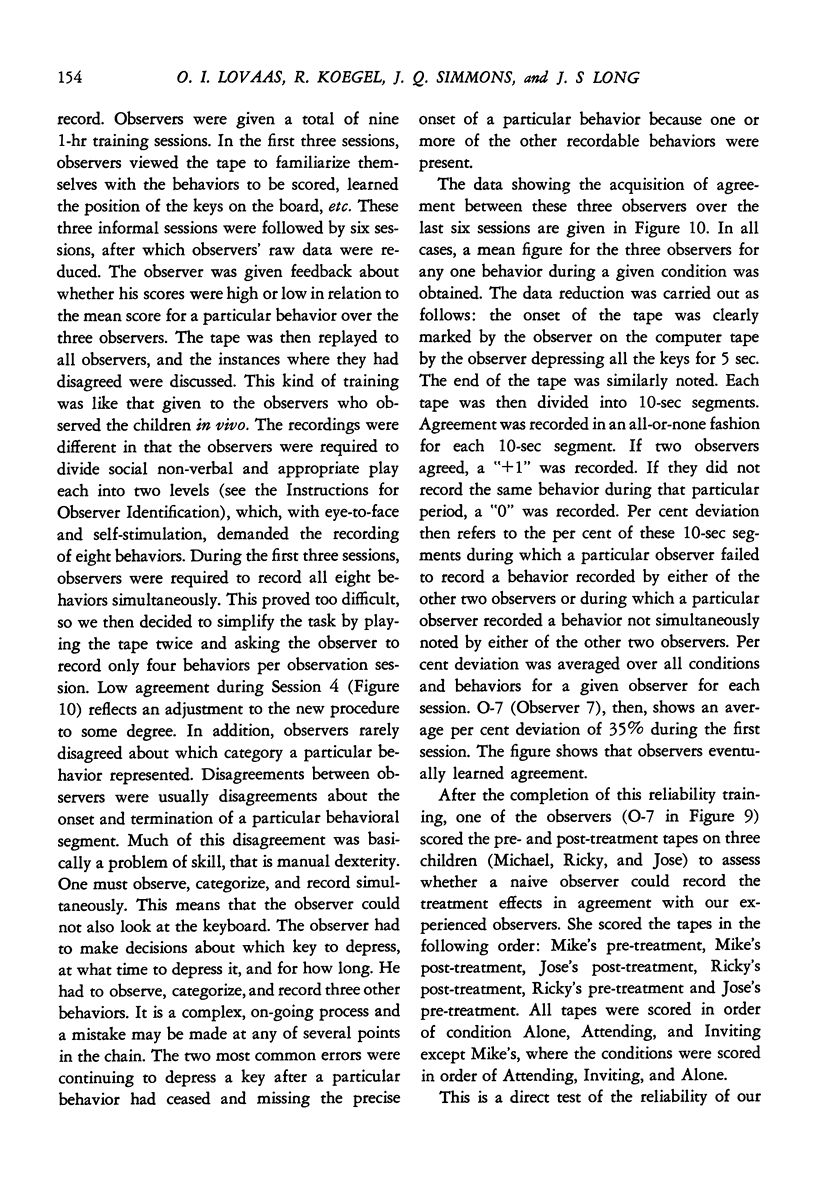
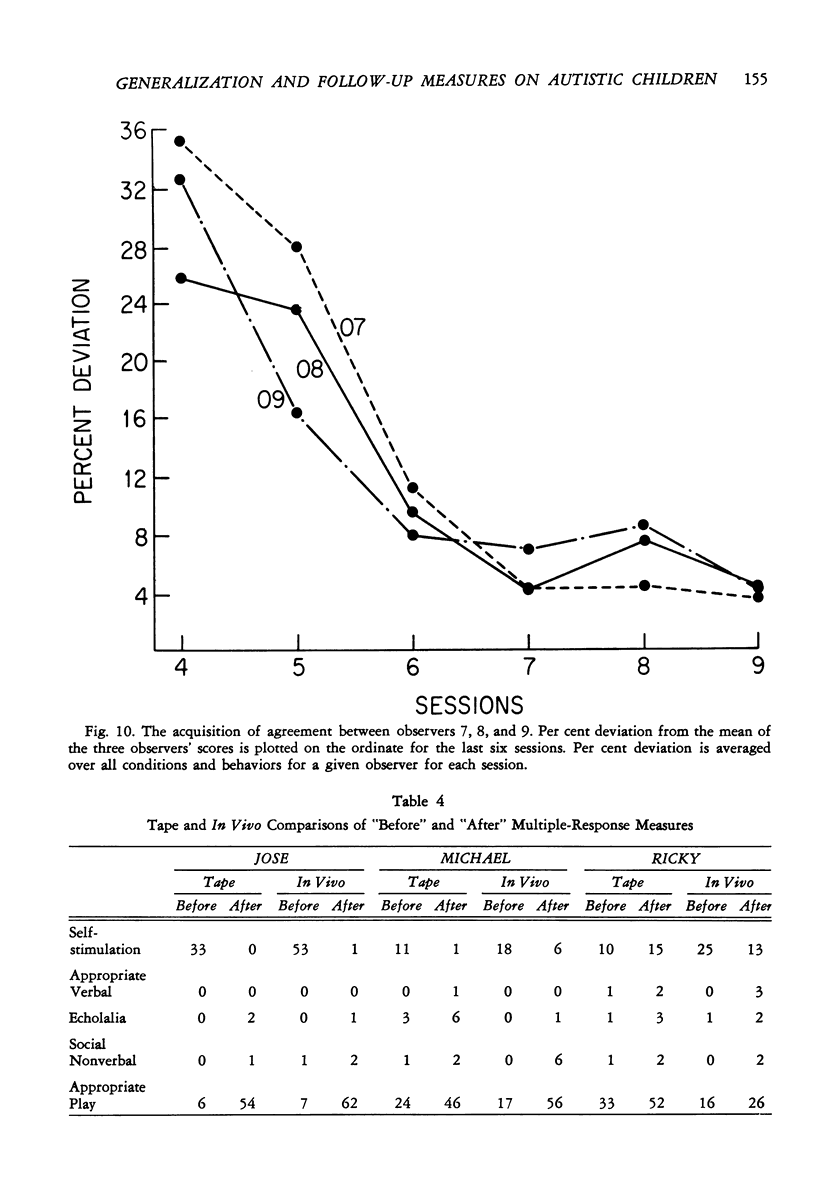

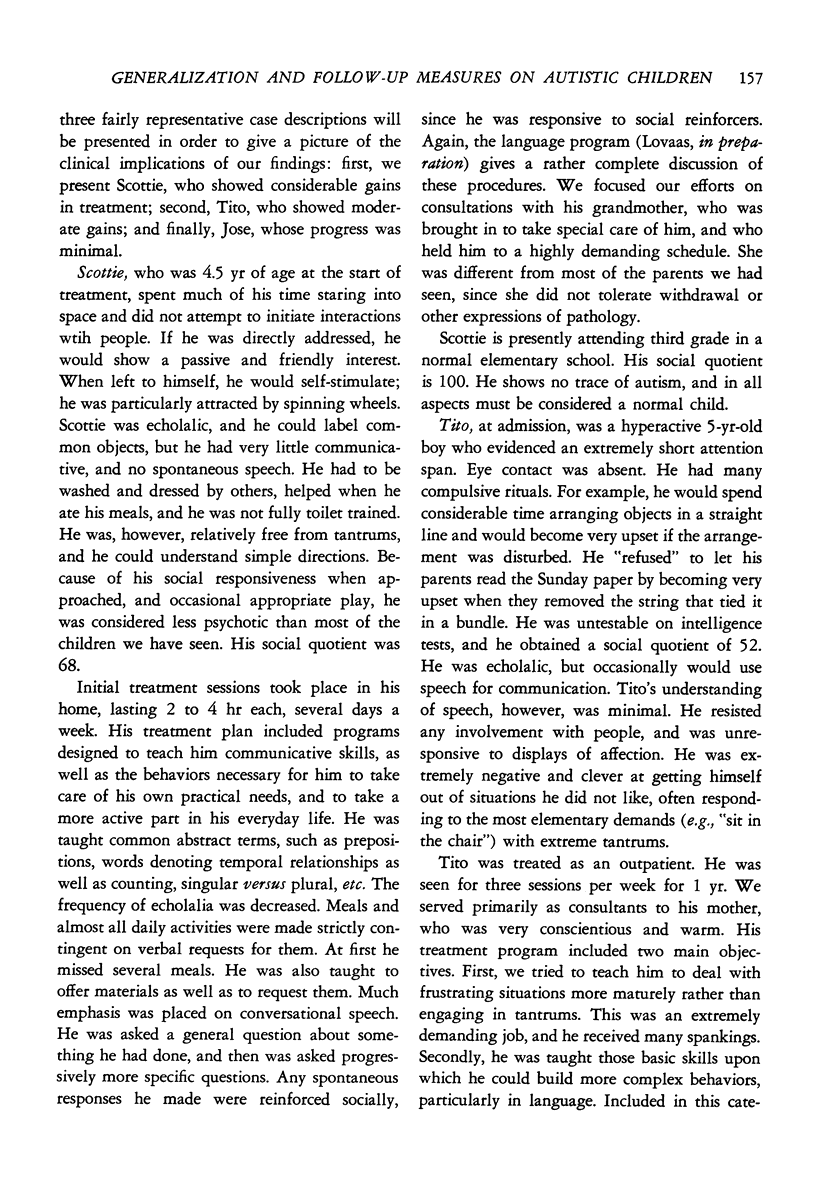
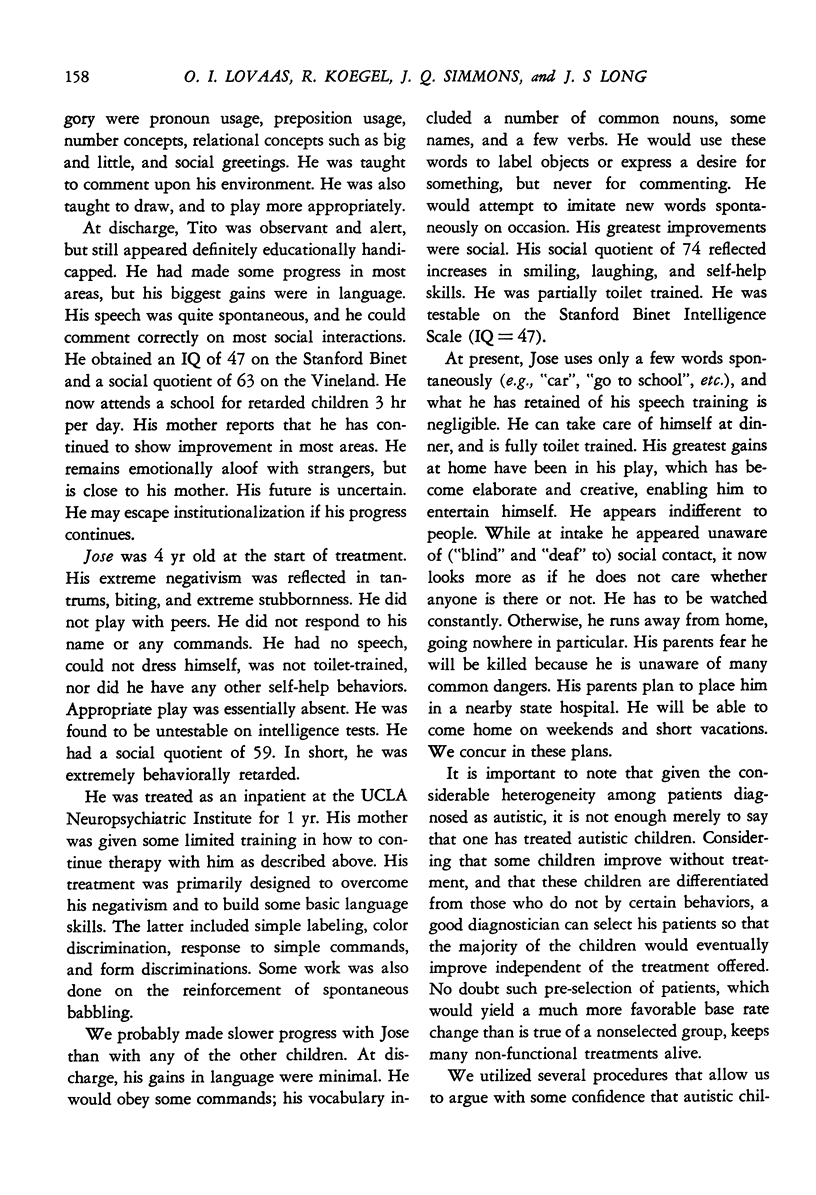
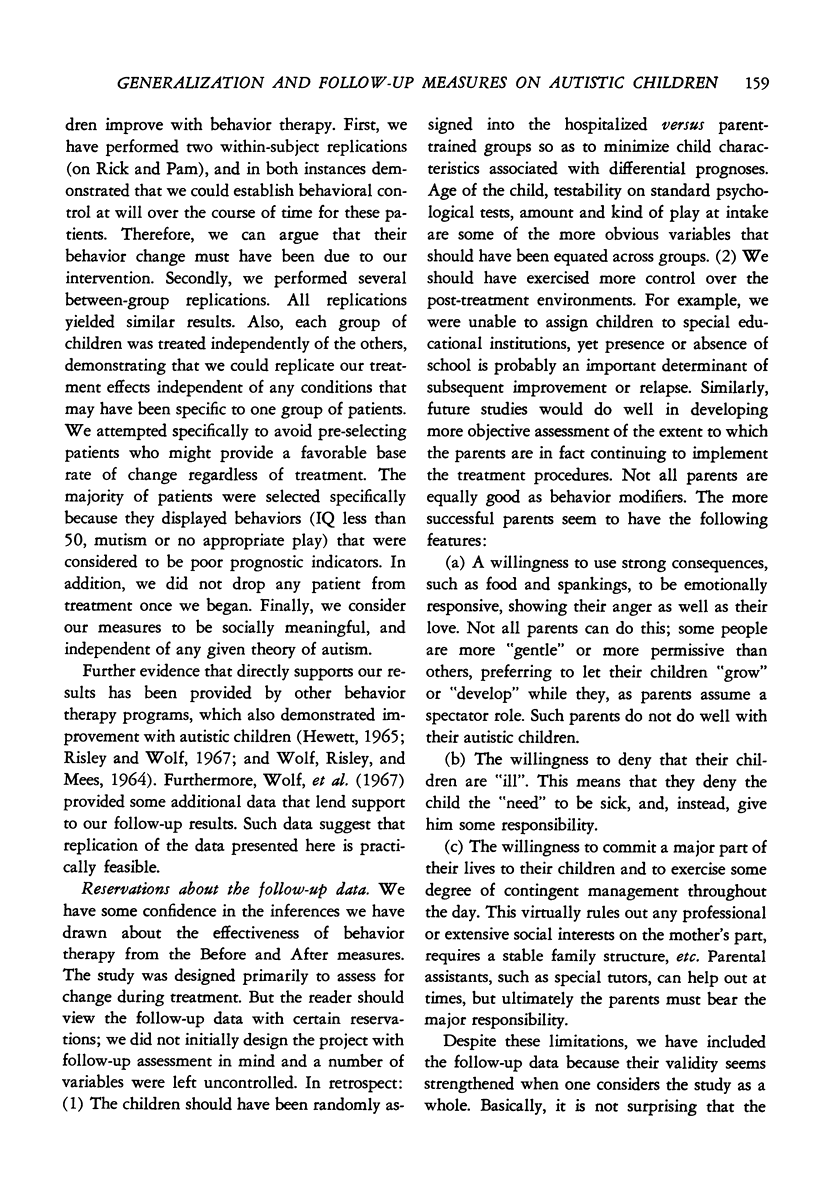
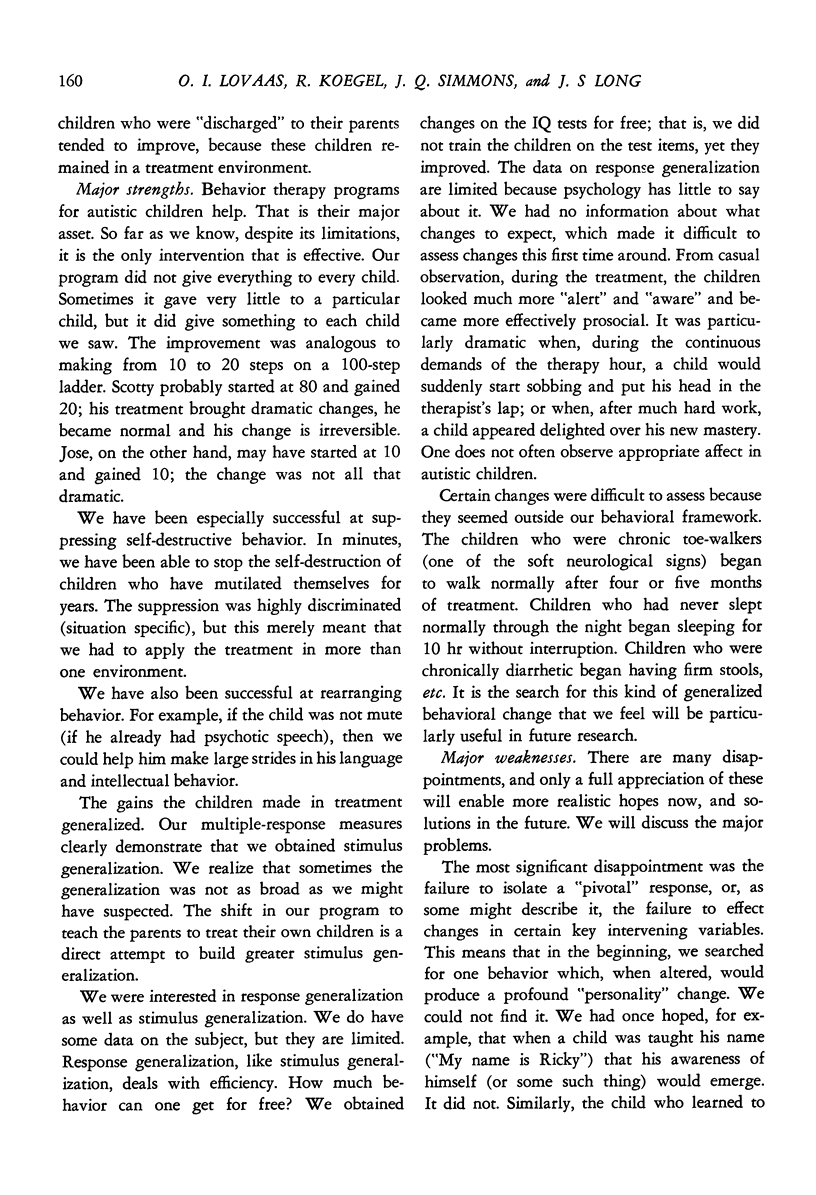
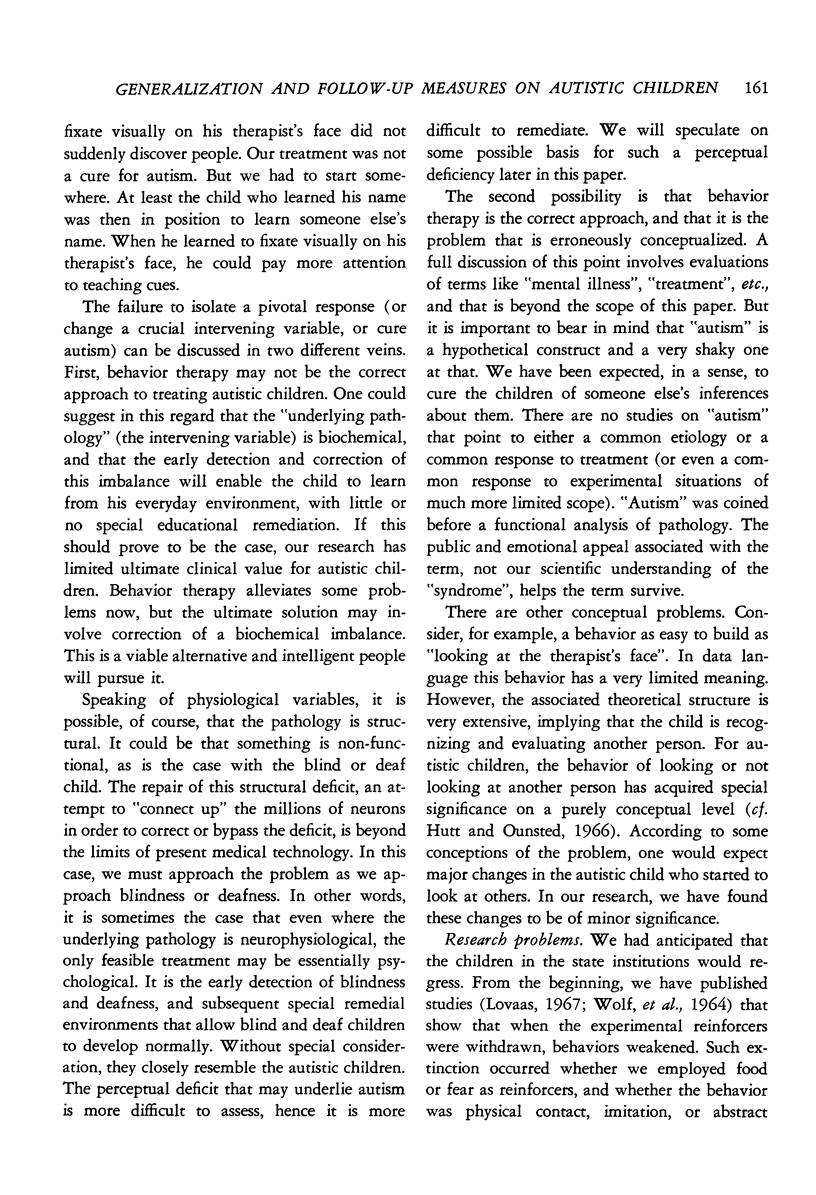
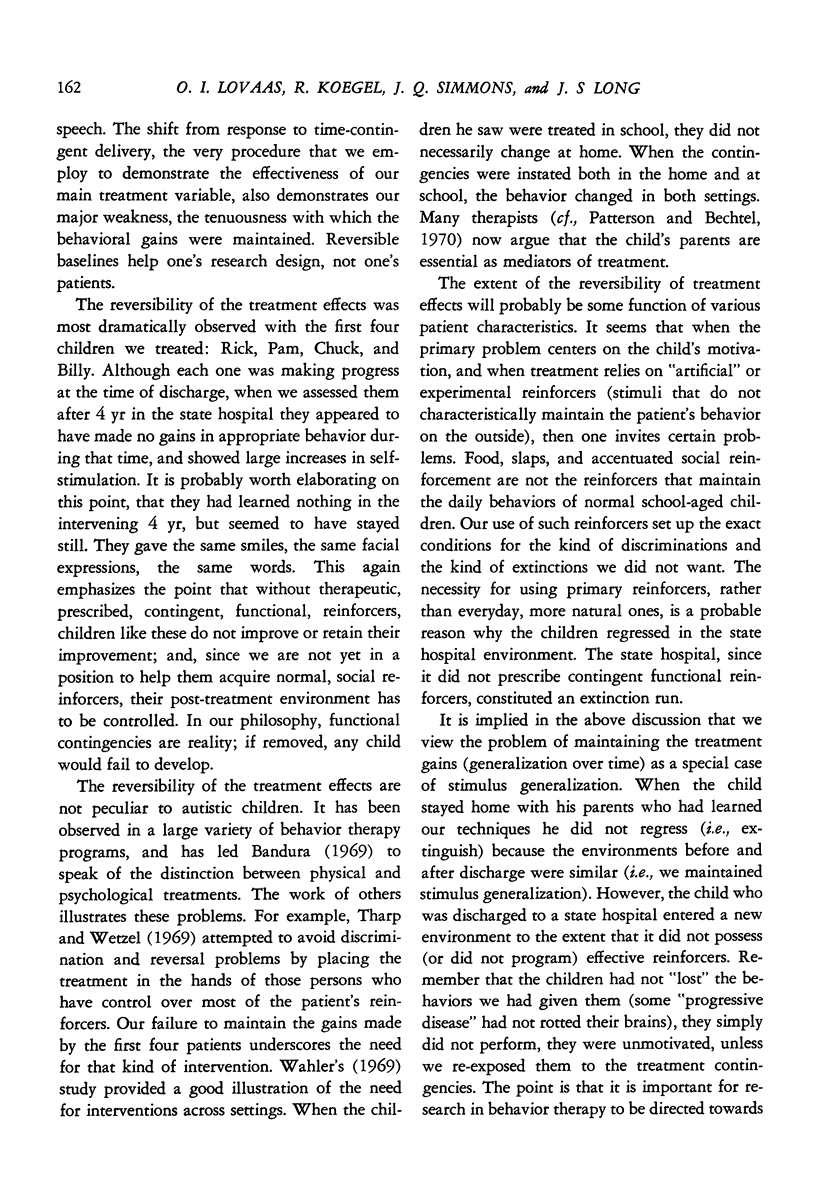
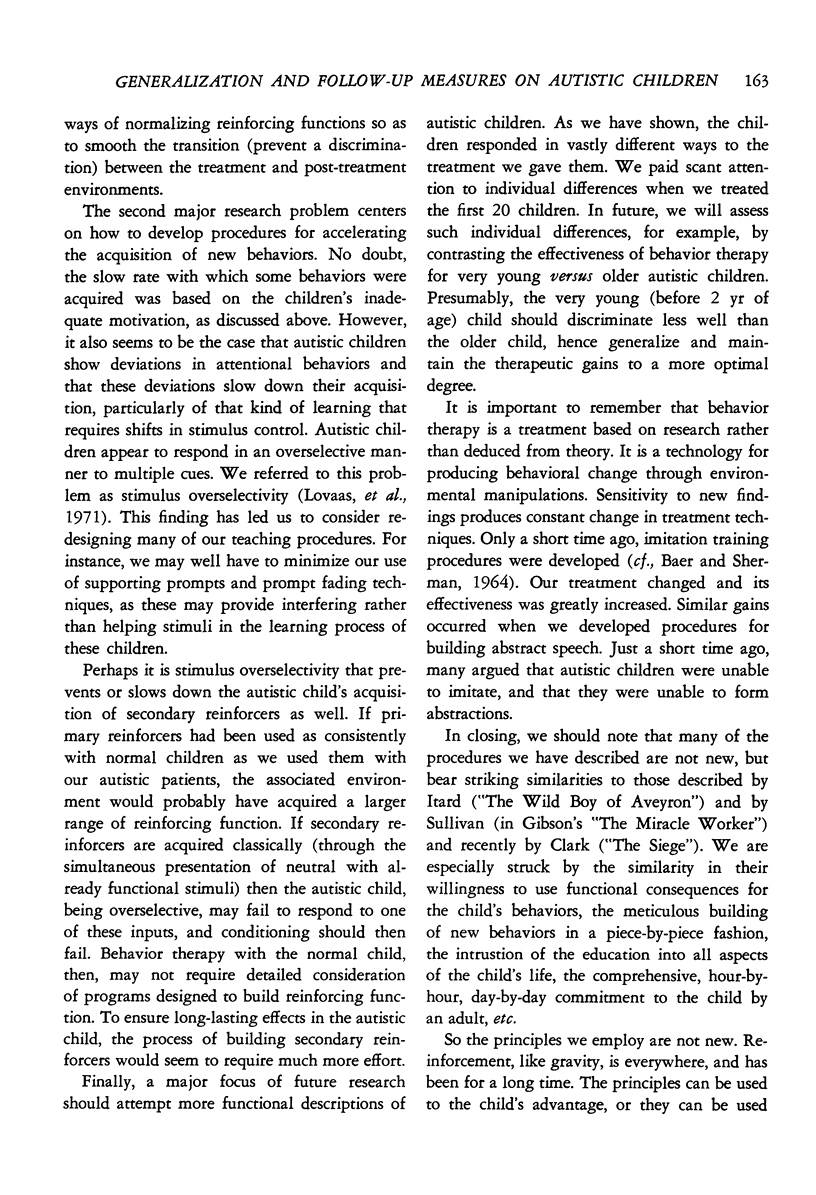
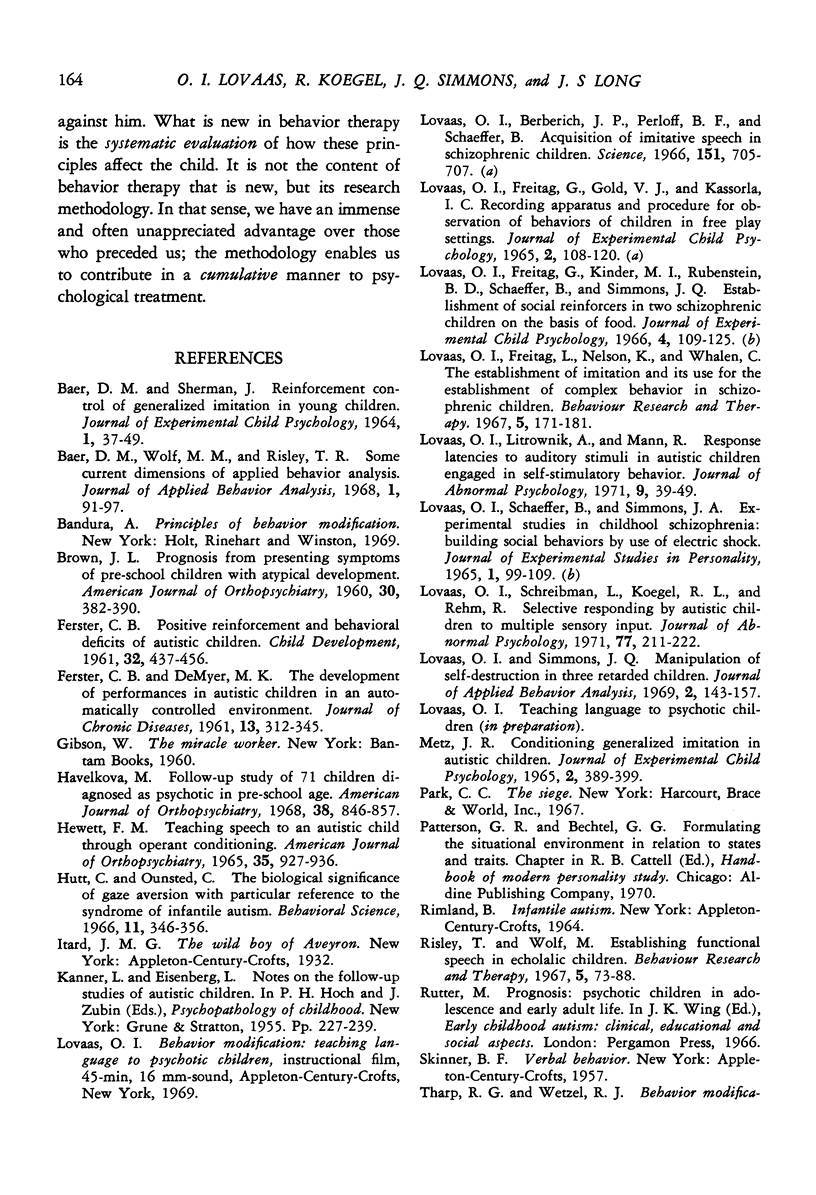
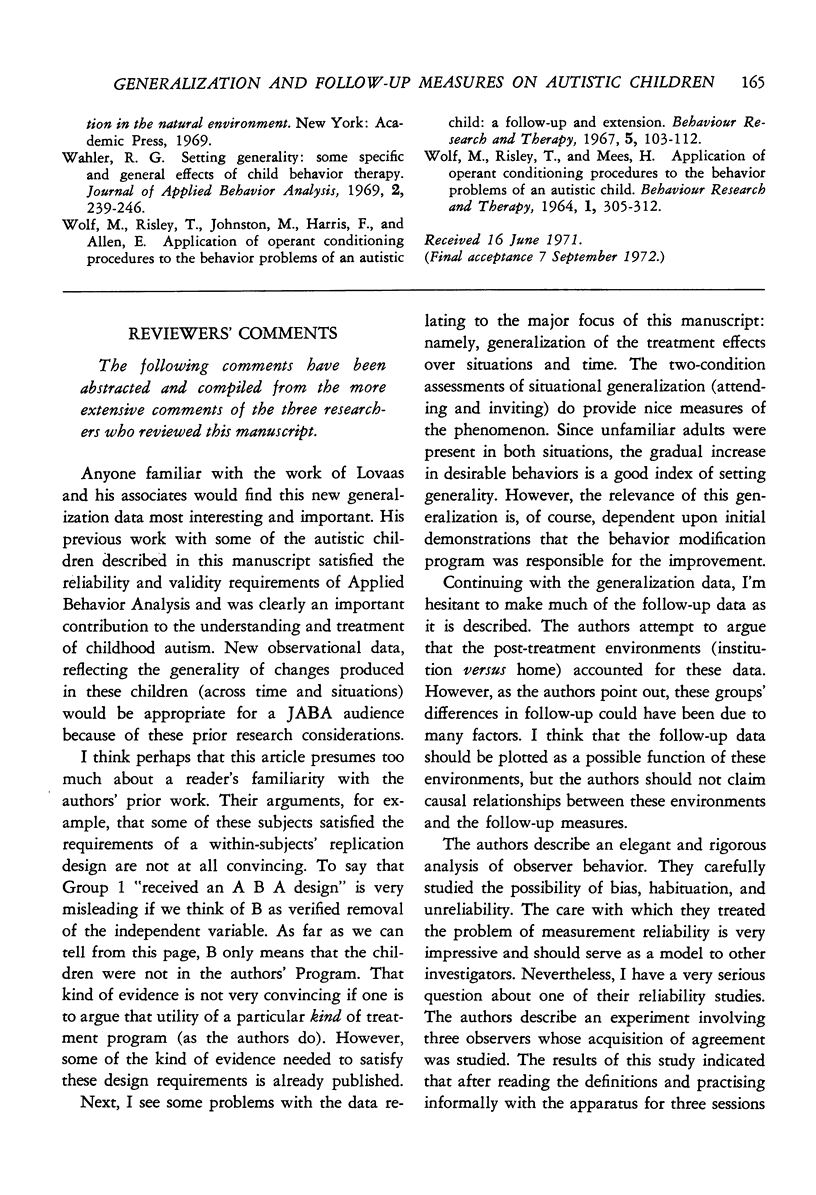
Selected References
These references are in PubMed. This may not be the complete list of references from this article.
- BROWN J. L. Prognosis from presenting symptoms of preschool children with atypical development. Am J Orthopsychiatry. 1960 Apr;30:382–390. doi: 10.1111/j.1939-0025.1960.tb02349.x. [DOI] [PubMed] [Google Scholar]
- Baer D. M., Wolf M. M., Risley T. R. Some current dimensions of applied behavior analysis. J Appl Behav Anal. 1968 Spring;1(1):91–97. doi: 10.1901/jaba.1968.1-91. [DOI] [PMC free article] [PubMed] [Google Scholar]
- FERSTER C. B., DEMYER M. K. The development of performances in autistic children in an automatically controlled environment. J Chronic Dis. 1961 Apr;13:312–345. doi: 10.1016/0021-9681(61)90059-5. [DOI] [PubMed] [Google Scholar]
- FERSTER C. B. Positive reinforcement and behavioral deficits of autistic children. Child Dev. 1961 Sep;32:437–456. doi: 10.1111/j.1467-8624.1961.tb05042.x. [DOI] [PubMed] [Google Scholar]
- Havelkova M. Follow-up study of 71 children diagnosed as psychotic in preschool age. Am J Orthopsychiatry. 1968 Oct;38(5):846–857. doi: 10.1111/j.1939-0025.1968.tb00603.x. [DOI] [PubMed] [Google Scholar]
- Hewett F. M. Teaching speech to an autistic child through operant conditioning. Am J Orthopsychiatry. 1965 Oct;35(5):927–936. doi: 10.1111/j.1939-0025.1965.tb00472.x. [DOI] [PubMed] [Google Scholar]
- Hutt C., Ounsted C. The biological significance of gaze aversion with particular reference to the syndrome of infantile autism. Behav Sci. 1966 Sep;11(5):346–356. doi: 10.1002/bs.3830110504. [DOI] [PubMed] [Google Scholar]
- Lovaas O. I., Berberich J. P., Perloff B. F., Schaeffer B. Acquisition of imitative speech by schizophrenic children. Science. 1966 Feb 11;151(3711):705–707. doi: 10.1126/science.151.3711.705. [DOI] [PubMed] [Google Scholar]
- Lovaas O. I., Freitag G., Kinder M. I., Rubenstein B. D., Schaeffer B., Simmons J. Q. Establishment of social reinforcers in two schizophrenic children on the basis of food. J Exp Child Psychol. 1966 Oct;4(2):109–125. doi: 10.1016/0022-0965(66)90011-7. [DOI] [PubMed] [Google Scholar]
- Lovaas O. I., Freitas L., Nelson K., Whalen C. The establishment of imitation and its use for the development of complex behavior in schizophrenic children. Behav Res Ther. 1967 Aug;5(3):171–181. doi: 10.1016/0005-7967(67)90032-0. [DOI] [PubMed] [Google Scholar]
- Lovaas O. I., Litrownik A., Mann R. Response latencies to auditory stimuli in autistic children engaged in self-stimulatory behavior. Behav Res Ther. 1971 Feb;9(1):39–49. doi: 10.1016/0005-7967(71)90035-0. [DOI] [PubMed] [Google Scholar]
- Lovaas O. I., Schreibman L., Koegel R., Rehm R. Selective responding by autistic children to multiple sensory input. J Abnorm Psychol. 1971 Jun;77(3):211–222. doi: 10.1037/h0031015. [DOI] [PubMed] [Google Scholar]
- Lovaas O. I., Simmons J. Q. Manipulation of self-destruction in three retarded children. J Appl Behav Anal. 1969 Fall;2(3):143–157. doi: 10.1901/jaba.1969.2-143. [DOI] [PMC free article] [PubMed] [Google Scholar]
- Risley T., Wolf M. Establishing functional speech in echolalic children. Behav Res Ther. 1967 May;5(2):73–88. doi: 10.1016/0005-7967(67)90001-0. [DOI] [PubMed] [Google Scholar]
- Wahler R. G. Setting generality: some specific and general effects of child behavior therapy. J Appl Behav Anal. 1969 Winter;2(4):239–246. doi: 10.1901/jaba.1969.2-239. [DOI] [PMC free article] [PubMed] [Google Scholar]
- Wolf M., Risley T., Johnston M., Harris F., Allen E. Application of operant conditioning procedures to the behavior problems of an autistic child: a follow-up and extension. Behav Res Ther. 1967 May;5(2):103–111. doi: 10.1016/0005-7967(67)90004-6. [DOI] [PubMed] [Google Scholar]


